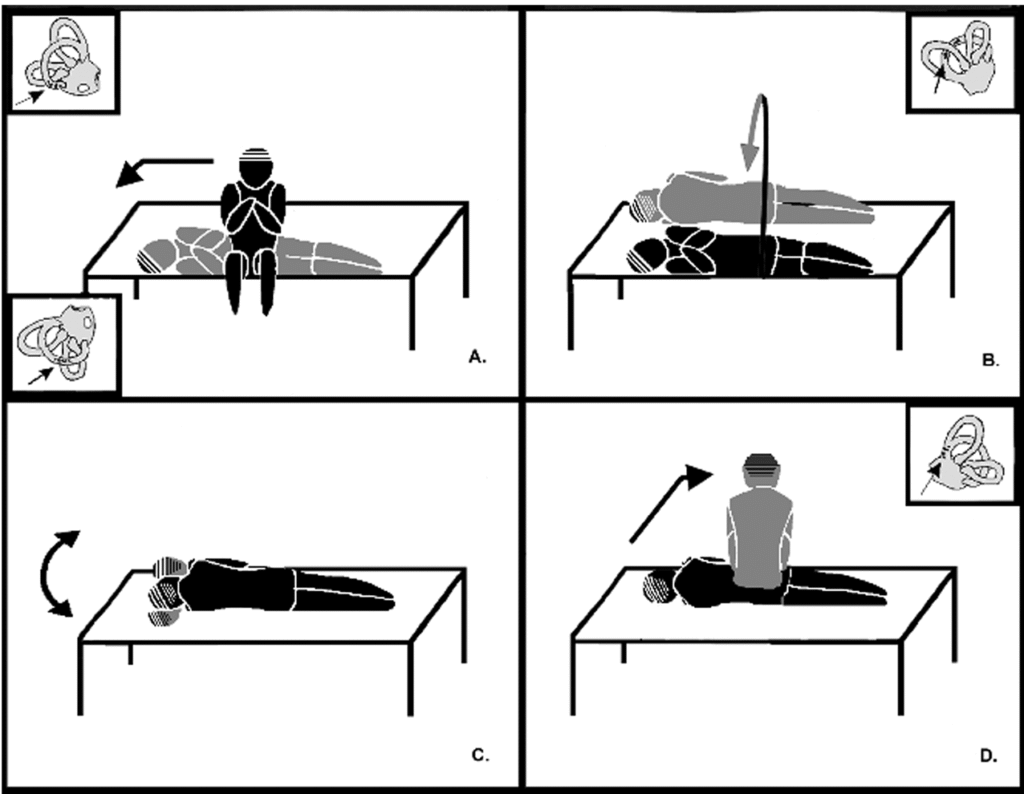Table of Contents
Introduction
Dizziness and vertigo can turn your daily routine upside down. Around 2.4% of adults worldwide experience vertigo at some point. It disrupts work, sleep, and even simple movements. Luckily, physiotherapy offers a drug-free way to regain control. New techniques have proven effective for restoring balance and improving life quality. This article explores five key physiotherapy methods to help you conquer vertigo naturally.
Understanding Vertigo physiotherapy and Its Causes
What Is Vertigo?
Vertigo feels like the room spins or tilts, not just light-headedness. It often comes with nausea, imbalance, or difficulty focusing. Unlike general dizziness, vertigo specifically relates to a problem in the inner ear or brain that messes with your sense of space. People with vertigo may find it hard to walk steadily or even sit without feeling unsteady.
People experiencing vertigo may feel dizzy, unsteady, or lose their balance. These sensations can be mild or severe and might last from a few seconds to several hours. Common causes include benign paroxysmal positional vertigo (BPPV), vestibular neuritis, or Meniere’s disease.
In many cases, vestibular physiotherapy can help manage and reduce vertigo symptoms through balance training, eye movement exercises, and repositioning techniques.

Common Causes of Vertigo
Most vertigo cases stem from issues in the inner ear, such as
- Benign Paroxysmal Positional Vertigo (BPPV): Displaced tiny ear stones causing brief episodes of spinning.
- Meniere’s Disease: Excess fluid build-up in the inner ear that impacts hearing and balance.
- Vestibular Neuritis: Inflammation of the nerve connecting the ear to the brain.
Other factors include migraines, age-related inner ear degeneration, or head injuries. Recognizing the root cause helps choose the right therapy.
The Role of Physiotherapy in Vertigo Management
Targeted physical therapy treats the underlying balance problems, not just the symptoms. Experts agree that physiotherapy offers a safe, effective way to improve vertigo without medications or surgery. Recent studies show that specialized exercises can significantly reduce symptoms and prevent future episodes.
Technique 1: Canalith Repositioning Maneuvers (Epley Maneuver)
Overview and Purpose
For BPPV, displaced calcium crystals in the ear cause spinning episodes. The Epley Maneuver works to move these crystals back to their proper place. By doing specific head and body movements, you can often stop vertigo in just a few treatment sessions.
Step-by-Step Procedure
- Sit upright on a bed.
- Turn your head 45° toward the affected ear.
- Lie back quickly with your head hanging slightly over the edge.
- Turn your head 90° to the opposite side.
- Roll onto your side, keeping your head turned.
- Slowly sit back up while keeping your head turned.
Repeat the steps as advised by your therapist, usually a few times over several days. Always perform these maneuvers under guidance to ensure safety.

Effectiveness and Real-World Success
Research shows that over 80% of BPPV patients find relief after one or two treatments. Many people report immediate improvement, allowing them to resume normal activities quickly. An example: a patient with recurrent vertigo experienced resolution after just three sessions of Epley.
Technique 2: Vestibular Rehabilitation Therapy (VRT)
What Is VRT?
VRT involves customized eye, head, and body exercises designed to retrain the vestibular system. The goal is to help the brain adapt by strengthening balance pathways. This therapy is flexible and suited for many vertigo types, from mild to severe.
Key Components of VRT
- Gaze stabilization exercises: Improve eye control during head movements.
- Habituation exercises: Reduce dizziness triggered by specific motions.
- Balance and gait training: Strengthen your ability to stand and walk steadily.
A licensed vestibular therapist creates a tailored plan based on your symptoms and needs. Consistency makes a real difference.
Benefits & Clinical Evidence
Research shows VRT improves balance, reduces dizziness, and prevents fall risks. People often notice increased stability after 4-6 weeks of regular practice. For best results, keep up with scheduled therapy sessions and exercises at home.

Technique 3: Balance and Gait Exercises
Importance of Balance Training
Good balance prevents falls and boosts confidence. These exercises strengthen your muscles and nerves responsible for keeping your body upright. They also help retrain the brain to interpret sensory signals more accurately.
Examples of Effective Exercises
- Tandem walking: Walking heel-to-toe in a straight line.
- Single-leg stands: Standing on one foot with support if needed.
- Dynamic exercises: tossing a ball or stepping on unstable surfaces like foam pads.
Practical Tips for Implementation
Start slowly, exercising 10-15 minutes daily. Use handrails or assistive devices if needed for safety. Regular practice enhances balance, making everyday movements safer.

Technique 4: Habituation Exercises
Purpose and Indications
Habituation training helps your brain “get used” to motion that initially triggers dizziness. It’s ideal for positional vertigo or motion sensitivity. The idea is to expose yourself gradually to challenging movements to decrease dizziness over time.
Common Habituation Protocols
- Brandt-Daroff Exercises: Moving from sitting to lying on each side repeatedly.
- Personalized routines: Do movements that provoke your symptoms, but slowly and in manageable amounts.
Protocol and Tips
Repeat exercises multiple times daily, especially during symptom peaks. Keep track of your progress so adjustments can be made. Patience is key; improvement comes with consistent effort.

Technique 5: Strengthening Neck and Postural Muscles
Weak or tight neck muscles can worsen balance problems. Proper posture supports your entire system and reduces overload on the vestibular system. Additionally, cervical issues can mimic or increase vertigo sensations.
Why It Matters
Recommended Exercises
- Gentle neck stretches: Slowly tilt or turn your head.
- Strengthening routines: Use resistance bands or light weights for neck muscles.
- Postural correction: Practice sitting and standing with a neutral spine and relaxed shoulders.
Integrating This Technique
Combine these exercises with vestibular therapies for a comprehensive approach. Schedule regular sessions with a physiotherapist to get personalized advice, ensuring exercises fit your specific needs and prevent strain.

Benefits and Outcomes of Vertigo Physiotherapy
Research shows physiotherapy can significantly reduce dizziness and improve balance. Patients often report better daily functioning and fewer falls. Clinical trials reveal that targeted VRT can cut vertigo episodes by over 70%. Personal success stories highlight how physiotherapy restores confidence and independence for many.
Tips for Managing Vertigo at Home
Managing vertigo away from the clinic is possible with simple steps. Always perform head movements slowly and avoid quick position changes. Identify and avoid triggers like bright lights, loud noises, or stress. Stay hydrated and make sleep a priority. Practice relaxation techniques to reduce stress, which can worsen symptoms.
Developing a personalized home routine with guidance from your physiotherapist can make a huge difference. For example, gentle balance exercises in the morning can keep symptoms at bay and improve stability over time.
Conclusion
Physiotherapy plays a key role in controlling vertigo and restoring your balance. Early assessment and targeted treatment can lead to faster recovery and fewer episodes. Combining professional therapy with self-care at home empowers you to regain independence and live a more stable life. Remember, seeking help from a specialized physiotherapist is your first step toward bouncing back from vertigo and reclaiming your everyday confidence.

